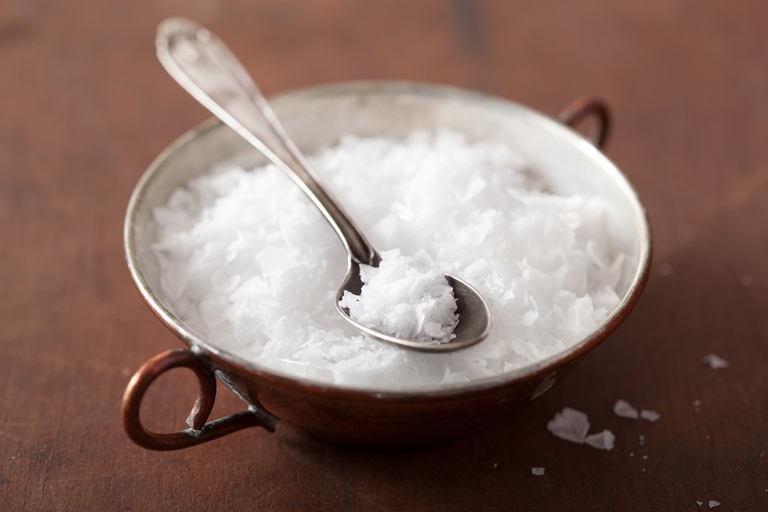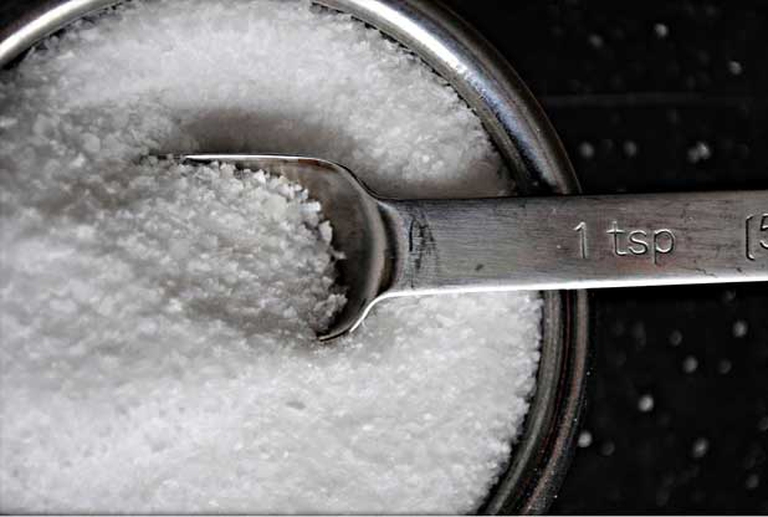
Spread on bread, tofu cream with dried tomatoes and capers can be served as snack or as appetizer.
Salt dries up the land. Which are the effects of its prolonged and exaggerated consumption on our body? A study reveals them.
The industrialised countries consume on average 12 to 15 grammes of salt every day, yet nutritionists suggest to avoid ingesting more than 5 grammes. Which are the effects of the exceeding sodium people ingest every day? A study published by Thrombosis and Haemostasis explains them clearly and highlights that salt has an immediate negative effect on arteries: indeed, it activates an inflammatory cytokine that causes arterial lesions and cholesterol clusters in the plaques. Basically, the study demonstrates for the first time that sodium plays an important role in activating the process that damages the inner surface of blood vessels that leads to arteriosclerosis.
In the past, research demonstrated the negative effects of the excessive consumption of salt. A study conducted in 2011 by scientists at Atlanta’s Center for Disease Control showed a connection between deaths from any cause and excess sodium intake; so, this ingredient wouldn’t have negative impacts only on the cardiovascular system, rather, it is linked to all types of disease. Another piece of research published in 2010 by the New England Journal of Medicine stated that reducing the usual amount of salt by only 2-3 grammes every day helps preventing many diseases, reducing costs in terms of human lives and health expenses. The study estimated that in a population of 300 million inhabitants like that of the United States, reducing salt consumption by 3 grammes daily prevents about 75,000 heart attacks, 50,000 strokes and 100,000 cases of coronary heart disease. This results in about 80,000 dead people less yearly. Certainly a better result than that obtained with the use of antihypertensive drugs.
“This is not about banning salty foods, but reducing them”, allergist and immunologist Attilio Speciani says. “Personally I’ve stopped seasoning salads or any other dish with salt for years. I prefer to use thyme, oregano, turmeric and other spices, limit the consumption of bread, which is one of the richest sources of salt, and choose boiled potatoes, Chinese-style rice or cous cous in its place. In this way I ingest much less than 5 grammes of salt daily and maintain my health in a conscious way. Today the problem is – Speciani adds – that this ingredient is included in all industrial preparations. Flavouring with herbs is different from seasoning with salt. It takes only 8-10 days of “weaning” from sodium to be able to savour the real taste of food”.
Salt is hidden in many ready food such as bread (1.5 grammes every 100 grammes of product), cured and processed meat, cheese and bakery products including sweets.
Siamo anche su WhatsApp. Segui il canale ufficiale LifeGate per restare aggiornata, aggiornato sulle ultime notizie e sulle nostre attività.
![]()
Quest'opera è distribuita con Licenza Creative Commons Attribuzione - Non commerciale - Non opere derivate 4.0 Internazionale.
Spread on bread, tofu cream with dried tomatoes and capers can be served as snack or as appetizer.
La pappa al pomodoro è una ricetta della tradizione toscana. Perfetta d’estate come modo per riutilizzare il pane raffermo.
Emmer wheat salad is both sweet and salted. Cherries can be replaced with other season fruits
Factory farming conditions and antibiotic-resistant pathogens emerging as a result of them pose an existential threat to humans in the form of zoonotic diseases. Why it’s time to produce and consume food more thoughtfully.
The world of cinema recognises the link between food choices and the climate crisis by offering vegan menus for awards season events, including at the most important of them all: the Oscars.
Let’s look at the reasons behind the growth of veganism in India, as a small yet vocal section of the population turns towards this diet and lifestyle in the largest milk producing country in the world.
by Jeffrey Y. Campbell, Manager of the Forest and Farm Facility at FAO In the Ecuadorian Amazon, Kichwa farmers grow dozens of products on tiny parcels of land. Their lands hum with biodiversity, yielding nutritious foods that have sustained families for generations. Wandering among fruit and nut trees and crops, these indigenous agroforesters fill their baskets
Mint has many health benefits, but in food it’s often accompanied by artificial green colourings. Instead, Galatea has created a green mint ice cream in a completely natural way.
Cold watermelon and tomatoes soup is refreshing summer meal, very easy to prepare.











